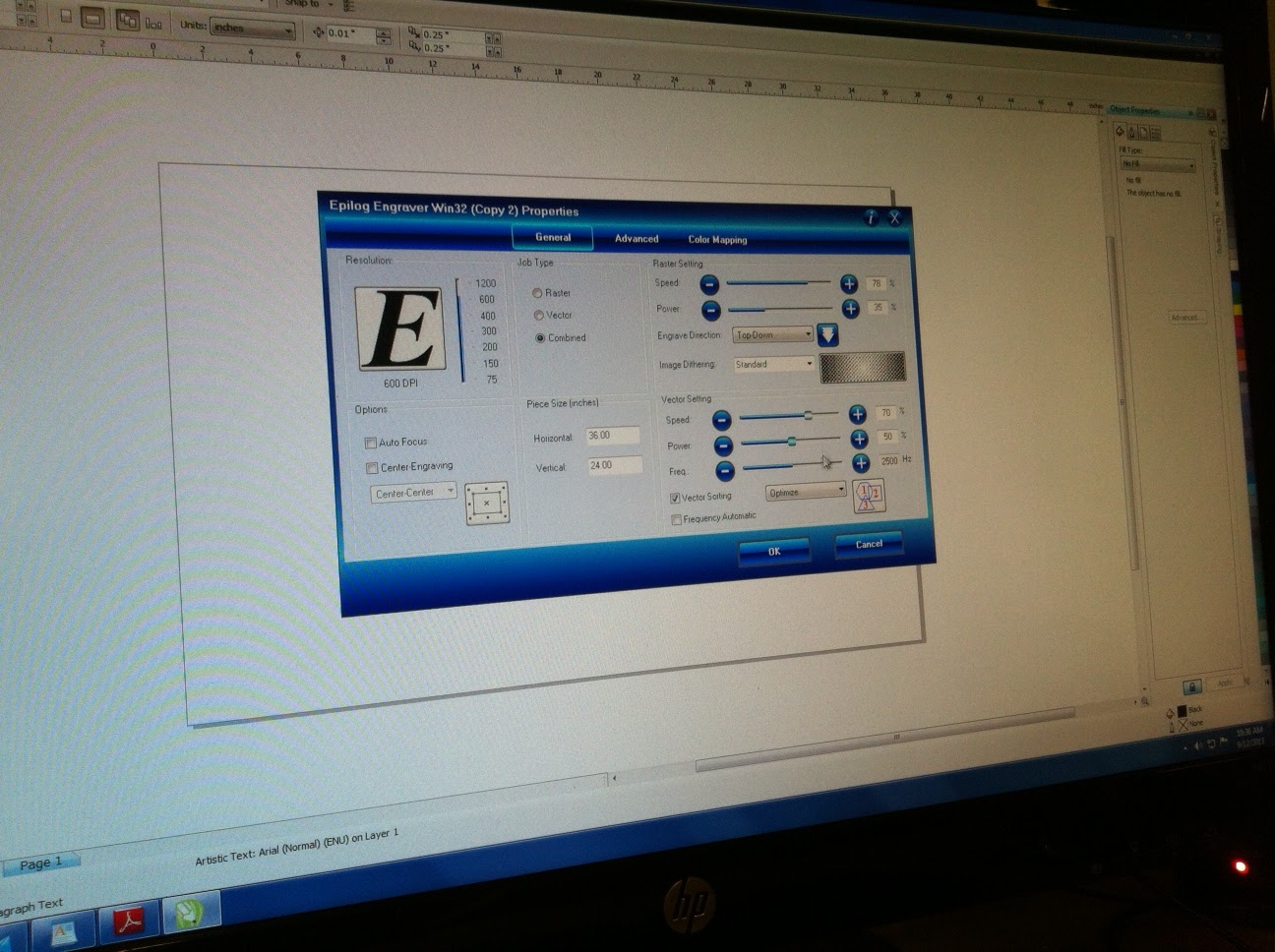


Remember that the longer lead on the LED is positive and should be connected to Pin 9.įinally, the last part of the circuit is the photoresistor (Figure 2: Photoresistor), our sensor. The resistor is there to limit current through the LED and should be sized accordingly depending on your LED to prevent burning it out.
Fabriwin tutorial laser programming series#
The LED and resistor should be connected in series between Pin 9 (Light Blue Wire) and GND (Black Wire). The purpose of the actuator is to inform us that the laser diode beam has been broken. Next, we will create our actuator (LED indicator). Make sure you don’t require a current limiting resistor for your laser diode. The negative lead will go to GND (Black Wire). Although I want to be able to turn the laser on/off, the Digital Output pins on the Arduino do not provide enough power for my laser diode. You can power the laser diode of the 5V pin (Red Wire). The first part of the circuit is the power for the laser diode. You can download Fritzing using the following link (optional): This way I always have something to reference in the future. I always like to make a schematic (Figure 1: Circuit Schematic) using Fritzing, an open-source schematic capture and PCB routing software. I am choosing to use a LED indicator as my actuator, but this could be an alarm, SMS text, or even a door lock. Microcontrollers are typically said to receive information from the outside world through sensors and to relay information or perform actions through actuators. There are 3 parts of the circuit: the laser power, the photoresistor receiver (the sensor), and the LED indicator (the actuator). The circuit design for this project is fairly simple. WARNING: Lasers can be harmful to the eyes and you should never look directly into the beam.
Fabriwin tutorial laser programming how to#
You will learn how to use an if/else loop, laser diodes, and a photoresistor. In this tutorial, you will learn how to set up a laser tripwire sensor and trigger an actuator, in this case an LED, upon the beam being broken. If you are unfamiliar with the Arduino platform please refer to the “Setting Up Arduino Tutorial.” This tutorial describes how to create laser tripwire with an Arduino Uno.


 0 kommentar(er)
0 kommentar(er)
